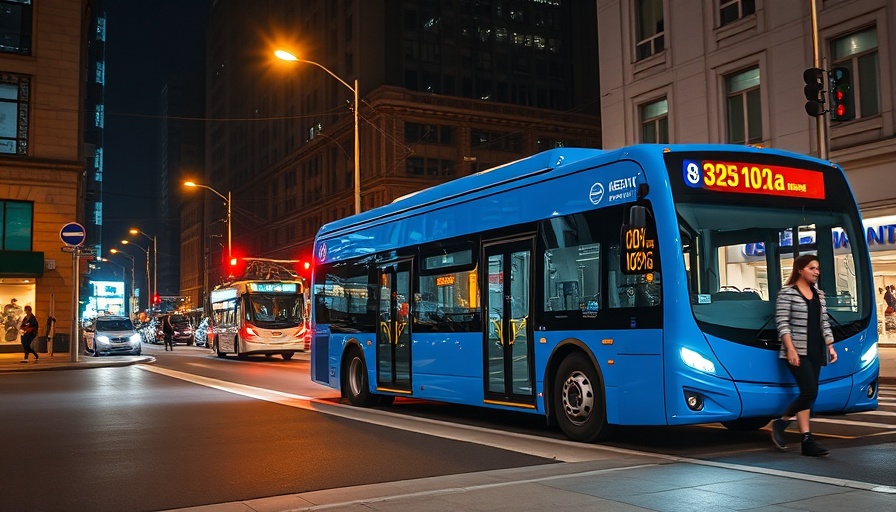
Huge Leap Towards Zero-Emission Transit: What it Means for Our Cities
The transportation landscape in Europe is undergoing a revolutionary change, with nearly half (49%) of new city buses registered in 2024 being zero-emission (ZE) models, according to a report from the European Federation for Transport and Environment (T&E). This stunning statistic showcases rapid growth in the shift from fossil fuel-powered buses to cleaner, more sustainable transportation options.
Last year's data revealed that just 36% of new city buses were battery-electric, demonstrating a significant increase in adoption. Battery-electric buses now account for 46% of this market, complemented by a growing 3% share of fuel-cell buses. The increased focus on cleaner transit was largely driven by new European regulations and policy initiatives that support cleaner vehicle options.
Why California Homeowners Should Care About Zero-Emission Buses
For California homeowners, this swift transition to electric buses is particularly relevant. California has set ambitious carbon reduction goals, and a significant shift toward ZE vehicles could enhance local air quality, reduce noise pollution, and lower greenhouse gas emissions. Many cities in California are already investing in cleaner public transport systems to align with these environmental goals, thus improving the quality of life for urban and suburban residents alike.
Global Leaders in Clean Transportation
The push for zero-emission buses is not uniform across Europe; countries like the Netherlands, Finland, and Iceland have achieved all-new city buses being battery-electric. Meanwhile, Spain and the UK are close behind, reporting new sales harboring vast improvements in adoption of ZE models at 57% and 56% respectively. The standout performer, however, has to be Estonia, which saw a dramatic rise from zero electric buses in 2023 to an impressive 84% of new city bus sales as electric in just one year.
Future Predictions: A Cleaner Tomorrow
T&E forecasts that we could see 100% zero-emission sales in city bus fleets by 2027, thanks to regulatory incentives and city-level policies like zero-emission zones and fleet targets. This trend bodes well for urban planning in California as cities work to create greener, cleaner environments for their residents. Areas that may lag behind could serve as case studies in motivating the swift adoption of cleaner technologies.
Actionable Insights: How to Support Zero-Emission Efforts
Residents can advocate for policies that promote sustainable transit options, encourage their local governments to invest in electric buses, and support businesses that contribute to this growing market. As homeowners consider their own carbon footprints, they can also play a role in this movement—whether through advocating for solar panel installations, choosing EV-compatible homes, or participating in community discussions about green transit initiatives.
By recognizing the rapid advancements in zero-emission buses across Europe and understanding their relevance to California's environmental goals, we can foster a culture of support for cleaner transit solutions that will benefit our neighborhoods and planet.
 Add Row
Add Row  Add
Add 




Write A Comment